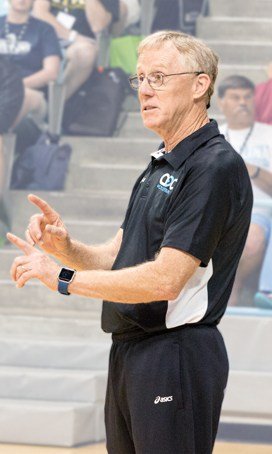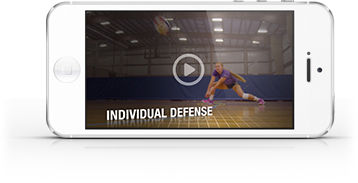Part 1 of 3 - Article written by Marie Zidek – Assistant Coach University of New York at Buffalo
Performance testing variables are used in almost every athletic activity to measure performance potential within sport. In football, we glim and glam over NFL Combine numbers each spring, which compare speed; agility; reaction time; vertical leaping ability; and muscular strength in the weight room. In volleyball, the catch phrases “touch height,” “vertical leaping ability,” and “physicality at the net” are used to identify a pecking order of top levels athletes on down.
Our game is played above the net and thus, “above the net” variables must be measured. This article is hopefully going to start a healthy conversation on when, what, and where through a three-part series.
Firstly, let’s start with when to measure. This can be challenging, because it takes time…time you’d rather be spending training your athletes. However, there are many strategies you can use in order to fit in testing and workouts. You can test only one variable at the start of a session and repeat for all your training sessions throughout the week/ two week window for example.
It’s important to remember that testing provides practice at the “competitive mind” in that it gets competitive juices flowing and requires the athlete to perform in a defined time window. In other words, it helps train athletes to rise to the occasion.
Below are the different testing windows for the three most popular routes of playing our game:
- If you’re coaching a college team, measurements take place during the 5 phases of the year: pre-season, season, non-traditional/ non-competitive season, non-traditional/ competitive season, and summer. Depending upon resources, testing usually is a “pre” and “post” measurement for each training phase. This way, you can track how much your athletes are improving over the training period and throughout the year.
- If you’re coaching a club team, testing may occur at more loose variables. You probably get your team together after high school seasons, which in most states is approximately December. Pre-season testing should occur in January before you get too deep into training. The second testing window should be right around Qualifier time, which is usually end of February-early March. This gives your kids a chance to get their jumping legs back under them as well as reap the benefits from all of your physical training – something they probably did not get a lot of in high school ball. The third testing window is during May. For some teams, this may be a post season test if your team ends in May. For other teams, this is a pre-Nationals test. Whatever your situation, this testing window is very important, because it can show how much your athletes improved over the entire club season, which for many lasts close to 8 months. This can provide useful information at what your athletes’ trainability and vertical ceiling may be.
- High school is similar in that there is a pre-season and post season phase. Depending on the resources and preference, you may add a third testing window in the middle of your high school season, but most seasons are too short to fit in 3 sessions. Therefore, I recommend a pre-season and post-season measurement. Note that you can have your post-season measurements occur in the last week of competition in order to maximize results.



